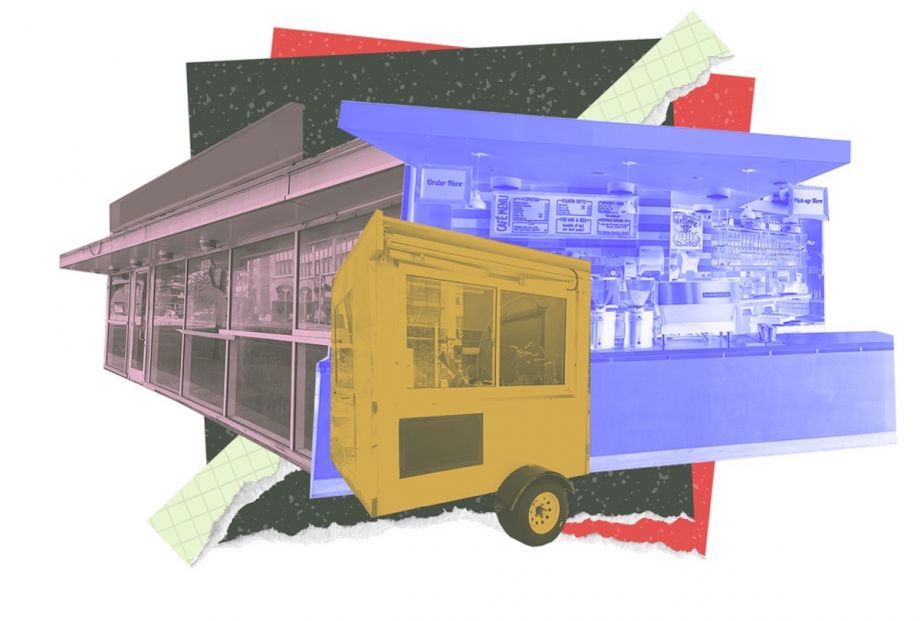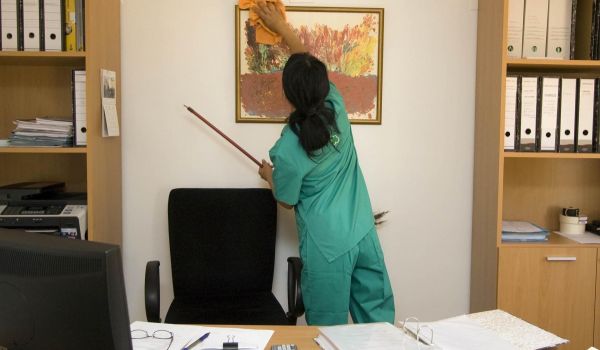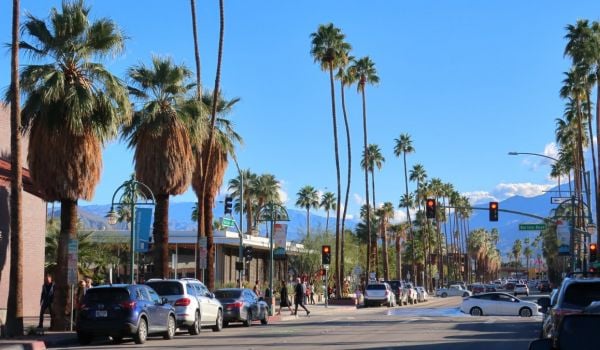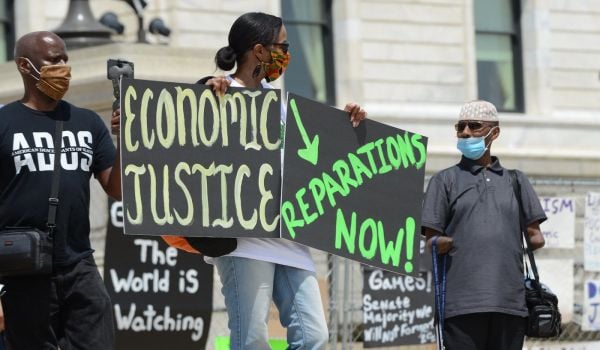If the pattern continues, these rough years of the COVID-19 pandemic and its aftermath will mark a time of expansion and renewal for the Filipino community in San Francisco’s South of Market neighborhood, or SOMA. That’s where a local Filipino-led nonprofit is bringing Filipino entrepreneurs and artists to populate a portfolio of vacant storefronts along a key stretch of SOMA’s Mission Street Corridor.
The plan is for the storefronts to further cement efforts that began before the pandemic to establish the stretch as the main drag for a Filipino cultural district, says Desi Danganan, founder and executive director of Kultivate Labs, the nonprofit behind SOMA’s Vacant to Vibrant program.
Funded by the city and Wells Fargo, the Vacant to Vibrant program is providing storefront tenants flexible leases with rents based on a percentage of revenues generated, rather than a fixed amount each month. The program is also covering the costs of building out the spaces for tenants, as well as a 10-week business bootcamp run by Kultivate Labs.
The leases will run three to five years depending on location, but with options to break the lease in some cases every six months or other cases 12 months — giving both sides maximum flexibility during a time of uncertainty for commercial real estate in a downtown hit hard by tech sector mass layoffs and changing post-pandemic commute patterns.
There are seven current storefronts currently in Kultivate Labs’ portfolio for Vacant to Vibrant, including a vacant restaurant space and a vacant coffee kiosk inside a coworking space. One of the larger spaces is the old S.F. Provident Loan Association Building across from the historic San Francisco Mint. More storefronts are in the works.
Danganan estimates he’s scouted out and asked local landlords about setting up pop-up activations for at least 25 specific storefronts over the past few years, going back to before the pandemic. And now, largely because of persistent vacancy after the pandemic, SOMA landlords are becoming more open to the idea.
“I’ve been telling the city even before the pandemic that we should be doing pop-up to permanent as a model,” says Danganan. “It was hard before because the market was so hot, landlords could get anybody to pay top dollar.”
Filipino roots in the area run deep, but the community has remained largely at the mercy of real estate development forces looking to capitalize on SOMA’s central location in the city.
San Francisco’s first Filipino immigrant enclave was Manilatown, which once existed along Kearny Street, bordering the city’s Chinatown. It was home to most of the city’s estimated 10,000 Filipinos in the 1930s. But that location also put it in the path of better resourced and connected development interests. Urban renewal and the expansion of downtown San Francisco office space came for Manilatown in the 1970s. The “I-Hotel,” which had become a vital housing and commercial space in the neighborhood, was infamously the site of a saga of resistance to displacement – followed by a brutal mass eviction in 1977.
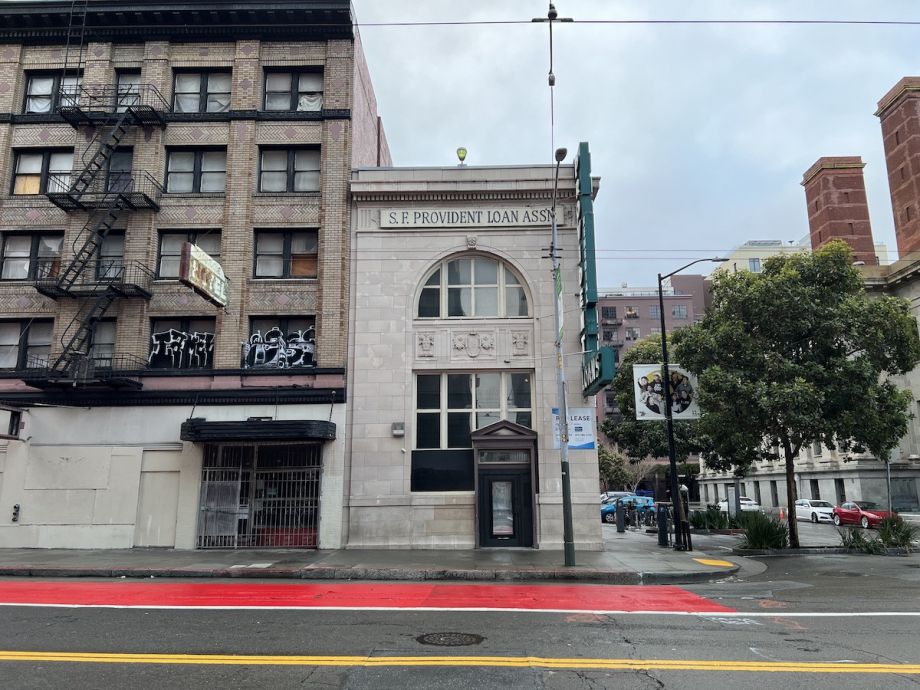
One of the program's larger spaces is the old S.F. Provident Loan Association Building. (Photo by Oscar Perry Abello)
The SOMA area has had its own deep history as a second Filipino enclave in San Francisco. In 1921, the Gran Oriente Filipino Masonic fraternity — the first mutual aid association formed by Filipino immigrants in the United States — bought a SOMA building to serve as a community space and housing for Filipino seasonal laborers. With more room in SOMA, the Filipino population in the neighborhood continually expanded, including an influx of Filipino veterans who fought for the U.S. in WWII. The 1965 Immigration and Nationality Act, which prioritized family reunification, brought even more Filipinos to SOMA.
The fall of the I-Hotel symbolized the end of San Francisco’s Manilatown, leaving SOMA as the city’s main Filipino neighborhood. More and more San Francisco Filipinos ended up in SOMA as they were displaced by development around the former Manilatown or other parts of the city like the Fillmore. The blue-collar, largely-industrial SOMA area offered housing that was affordable for Filipinos, as well as plenty of Filipino-owned businesses and Filipino-run service organizations catering to their needs.
But many of those businesses and residents also faced displacement, first to clear land for what became the Yerba Buena Center for the Arts and the Moscone Convention Center. In later decades SOMA was overwhelmed by the boom years of the tech industry, which brought new luxury housing and office development to the area.
It was the tech industry that brought Danganan to San Francisco from his native Southern California in the late 1990s. He spent his days building websites and his nights promoting parties across the Bay Area. But in SOMA, he couldn’t help but notice all the indications of the area’s Filipino heritage. An independent Filipino bookstore over here, a bunch of streets named after Filipino heroes and sheroes, the old Filipino Senior Citizens Club right across 6th street from a nightclub he frequented.
After years of visioning and planning, the Filipino-American Development Foundation spearheaded a grassroots coalition that finally convinced the San Francisco Board of Supervisors to pass legislation creating the SOMA Pilipinas Cultural District back in 2016.
As the cultural district was coming to fruition, Danganan founded Kultivate Labs as a platform to support existing Filipino entrepreneurs and artists in the neighborhood, as well as cultivating or recruiting new ones to make a professional or even personal home in SOMA. The annual Kultivate Labs-produced UNDSCVRD Market Series has brought nearly a million dollars in spending to its vendors over the past few years. Restaurants that Kultivate Labs has incubated have won acclaim and moved into brick and mortar spaces across the city — like the new Abacá, a Filipino restaurant inside the Kimpton Alton Hotel in Fisherman’s Wharf.
And now Kultivate Labs will be able to move more of the Filipino businesses or artists under its wing into storefronts along the Mission Street corridor in SOMA. One Vacant to Vibrant space is a fully-permitted food truck semi-permanently parked at Kapwa Gardens, a temporary “healing garden” along the corridor that Kultivate Labs built with volunteers from the neighborhood.
“Whenever there is a forest fire, that creates a clearing for new seedlings to hatch,” Danganan says. “The [pandemic-induced] purge is an opportunity to regenerate the forest. San Francisco was on this unsustainable path of economic development, prices were rising, people were getting pushed out. Something was going to break. It just couldn’t continue at that pace. And then the bubble popped. So it’s this golden opportunity now for San Francisco to course correct.”
San Francisco isn’t alone in the shift to pop-up storefront approaches. Pop-up retail strategies have been rising in popularity as a result of the pandemic, as developers and policymakers grapple with the uncertainty of the post-pandemic shopping and dining-out worlds. But without setting aside resources intentionally for building out storefronts or technical assistance for entrepreneurs and artists to navigate the leasing process, the prime beneficiaries of new pop-up retail opportunities will be those who already have the resources to take advantage of landlords being open to more fluid leasing situations.
Seattle, with its Seattle Restored program, set aside resources for pop-up to permanent storefront activations, so that those who didn’t have those resources before might avail themselves of such opportunities today.
Money talks. Danganan says he’s been inquiring for years about setting up pop-up to permanent leasing situations in SOMA, but landlords — including the city’s transportation agency, which owns a SOMA parking garage with multiple storefronts along Mission Street — have been slow to say yes until he could prove to them he had funding to invest in the spaces.
It took a pandemic to get those resources to SOMA, but in some ways it seems destined to happen that way.
“It’s an apt opportunity for Filipino-Americans to step up into the void,” Danganan says. “Our motherland is a place where natural disasters occur annually but our people always rebuild and move forward, so it’s in our DNA to bring that to the table for San Francisco.”
(Disclosure: Eric Shaw, board chair of Next City, is Director of the Mayor’s Office of Housing and Community Development for the City and County of San Francisco. Board members retain no influence over editorial decisions. For a complete list of Next City board members, visit the About section.)
This article is part of The Bottom Line, a series exploring scalable solutions for problems related to affordability, inclusive economic growth and access to capital. Click here to subscribe to our Bottom Line newsletter.

Oscar is Next City's senior economic justice correspondent. He previously served as Next City’s editor from 2018-2019, and was a Next City Equitable Cities Fellow from 2015-2016. Since 2011, Oscar has covered community development finance, community banking, impact investing, economic development, housing and more for media outlets such as Shelterforce, B Magazine, Impact Alpha and Fast Company.
Follow Oscar .(JavaScript must be enabled to view this email address)



